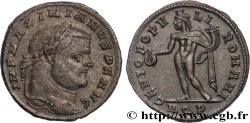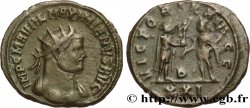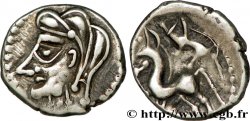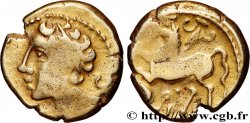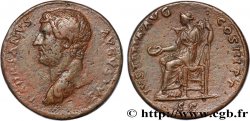Live auction - brm_600764 - MAXIMIANUS HERCULIUS Follis ou nummus
Чтобы принять участие в торгах, вы должны войти в систему и стать подтвержденным участником аукциона. Войдите, чтобы сделать ставку. Ваш аккаунт будет подтвержден в течение 48 часов. Не ждите до закрытия торгов, чтобы зарегистрироваться.Сделав ставку на данный товар, вы вступаете в юридическое соглашение на покупку выбранного товара и нажатием кнопки «Сделать ставку» подтверждаете принятие вами условий интернет-аукционов cgb.fr.
Ставка может бить сделана только в полном эквиваленте евро. Торги закроются согласно времени, указанному в описании товара, все ставки, сделанные после закрытия торгов, учитываться не будут. Не следует откладывать предложение вашей ставки до последнего момента, так как система может не успеть обработать вашу заявку, и ваша ставка не будет принята. Более детальную информацию вы найдёте здесь: FAQ по интернет-аукционам.
Все ставки победителей подлежат комиссии 18%.
Все ставки победителей подлежат комиссии 18%.
| Оценить : | 250 € |
| Цена : | Нет ставки |
| Максимальная предлагаемая цена : | Нет ставки |
| Конец торгов : | 08 October 2024 14:34:11 |
Тип Follis ou nummus
Дата: 300-301
Монетный двор / Город: Roma
Металл: copper
Диаметр: 27 mm
Ориентация осей монеты: 6 h.
Вес: 10,64 g.
Редкость: R1
Officine: 2e
Комментарии о состоянии
Exemplaire sur un flan ovale, court sur la légende de droit; Très joli droit. Revers de style fin. Patine gris foncé avec des reflets métalliques mordorés. Conserve la plus grande partie de son brillant de frappe et de son coupant d’origine
Ссылки в каталоге: :
Лицевая сторона
Аверс: легенда: IMP C MAXIMIANVS [P F AVG].
Аверс: описание: Tête laurée de Maximien Hercule à droite (O*).
Аверс: перевод: "Imperatore Cæsar Maximianus Pius Felix Augustus”, (L’empereur césar Maximien pieux heureux auguste).
Обратная сторона
Реверс: легенда: SACRA MON VRB AVGG ET CAESS NN/ -|-// S(MASSUE).
Реверс: Описание: Moneta (la Monnaie) debout de face, regardant à gauche, tenant une balance de la main droite et une corne d’abondance de la gauche.
Реверс: перевод: "Sacra Moneta Urbis Augustorum et Cæsarum Nostrorum", (La Monnaie sacrée de la ville de nos augustes et de nos césars).
Комментарий
Avec son argenture superficielle. Rubans de tytpe 2 aux extrémités bouletées. La massue fait partie de la marque d’émission, normalement réservée aux Herculéens (d’Hercule, Maximien et Constance Ier), mais nous pouvons aussi rencontrer le foudre avec les mêmes lettres d’officine.
With its superficial silvering. Type 2 ribbons with pelleted ends. The club is part of the issue mark, normally reserved for the Herculeans (of Hercules, Maximian and Constantius I), but we can also encounter the thunderbolt with the same letters of office
With its superficial silvering. Type 2 ribbons with pelleted ends. The club is part of the issue mark, normally reserved for the Herculeans (of Hercules, Maximian and Constantius I), but we can also encounter the thunderbolt with the same letters of office








 Cообщить об ошибке
Cообщить об ошибке Распечатать страницу
Распечатать страницу Отправить мой выбор
Отправить мой выбор Задать вопрос
Задать вопрос Consign / sell
Consign / sell
 Информация
Информация

